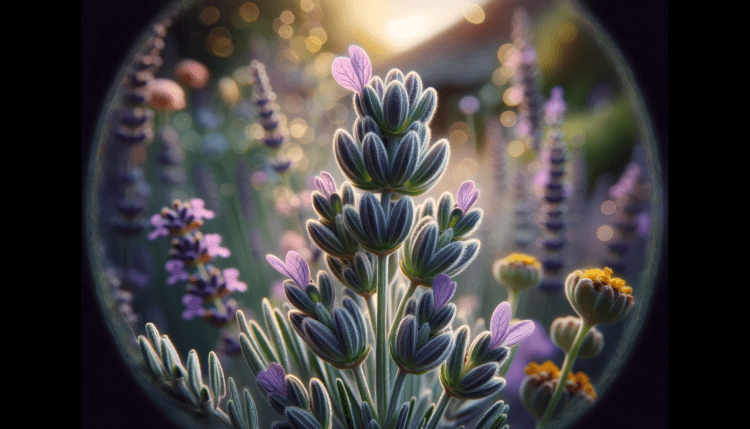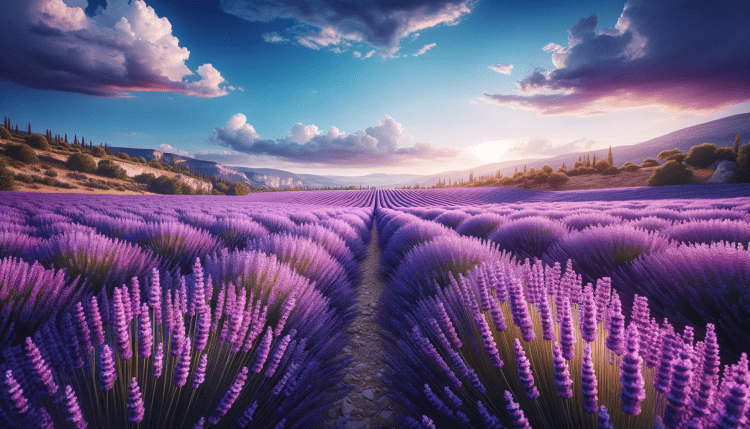
Quick Identification Guide for Lavender (Genus Lavandula):
Appearance:
- Lavender is known for its small, tubular flowers that range in color from pale lilac to deep purple. Some varieties can also have pink or white flowers.
- The plants typically have long, narrow leaves, which are often gray or greenish-gray in color.
- Flowers are arranged in spikes at the end of long stems.
Common Types:
- English Lavender (Lavandula angustifolia): The most widely cultivated type, known for its sweet fragrance.
- French Lavender (Lavandula stoechas): Identified by its distinctive ‘bunny ears’ top petals.
- Portuguese Lavender (Lavandula latifolia): Has broader leaves and a more pungent scent.
Plants Commonly Confused With:
- Russian Sage (Perovskia): Similar in appearance with purple flowers, but the leaves and overall plant structure are different.
- Catmint (Nepeta): Has a similar growth habit and lavender-blue flowers, but catmint flowers are more delicate, and leaves are softer and more aromatic when crushed.
- Salvia (Sage): Some salvia species have similar-looking purple flower spikes, but salvia leaves are usually green and larger.
Habitat:
- Native to the Mediterranean region, including southern Europe and parts of northern Africa and the Middle East.
- Grows well in dry, well-drained soils and sunny locations.
Cultivation:
- Widely cultivated as an ornamental plant in gardens and for commercial use.
- Used in borders, herb gardens, and as a landscape plant in areas with suitable climates.
Lavender is highly valued for its fragrance, beauty, and versatility. It is used in aromatherapy, culinary applications, and the production of essential oils. The plant is also a popular choice in gardens and landscaping for its ability to attract bees and butterflies while repelling deer and rabbits.

Quick Facts About Lavender (Genus Lavandula)
Botanical Name: Lavandula.
Family: Lamiaceae (the mint family).
Origin: Native to the Mediterranean region, including parts of Europe, Africa, and Asia.
Number of Species: There are about 47 known species of lavender.
Physical Characteristics:
- Flowers: Small, tubular, and typically purple, but some species have pink or white flowers. They are arranged in whorls on spikes at the stem’s end.
- Leaves: Typically slender, gray-green in color, and can be covered in fine hairs.
- Size: Depending on the species and growing conditions, lavender plants can range from small, compact shrubs to larger, sprawling plants.
Fragrance: Known for its distinctive, calming aroma. The intensity and specifics of the scent can vary among species and cultivars.
Growth Habit: Lavender is a perennial plant, growing as a shrub with a woody base.
Blooming Season: Typically blooms in late spring to early summer, though the exact timing can vary based on the species and local climate.
Popular Varieties:
- English Lavender (Lavandula angustifolia): The most common variety, known for its sweet fragrance and used in cooking and essential oil production.
- French Lavender (Lavandula stoechas): Recognizable by its distinct flower heads with petal-like bracts at the top.
- Spanish Lavender (Lavandula latifolia): Has a more intense, camphor-like scent and broader leaves.
Cultivation:
- Thrives in well-drained, sandy or gravelly soils. Prefers full sun and does not tolerate excessive moisture or humidity well.
- Often grown in herb gardens, as border plants, or in containers.
Uses:
- Aromatherapy: Lavender’s scent is renowned for its relaxing and calming properties.
- Culinary: Used to flavor baked goods, jellies, and used in herbal teas.
- Medicinal: Traditionally used for its antiseptic and anti-inflammatory properties. It’s also used in treatments for anxiety, insomnia, and digestive issues.
- Essential Oils: Widely used in the production of essential oils for cosmetics, perfumery, and aromatherapy.
- Landscaping: Popular in gardens for its beauty and ability to attract pollinators while repelling pests.

Harvesting: Flowers are typically harvested for essential oil production just as they begin to open.
Propagation: Can be propagated from seed, but more commonly from cuttings or layering to maintain specific cultivar traits.
Pests and Diseases: Lavender is relatively hardy but can be susceptible to root rot in overly moist conditions and can attract aphids and spittlebugs.
Environmental Benefits: Acts as a natural insect repellent and is used in companion planting. Lavender is also known for attracting bees and butterflies.
Cultural Significance: Associated with purity, silence, and calmness. In folklore, it was believed to ward off evil spirits.
Conservation: Some wild species of lavender are considered rare or endangered due to habitat loss and over-harvesting.




